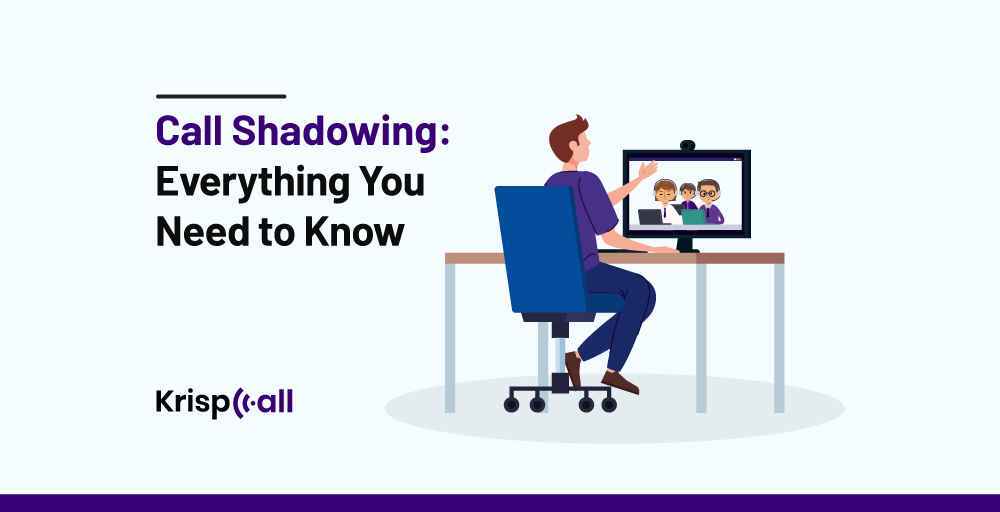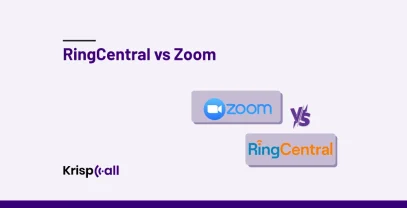Are you frustrated😫 training new employees individually in the call center? Do you use the same old method for training your new employee?
In this fast-paced world, one-on-one training is not feasible and you might face challenges while using the traditional training approaches.
If yes, call shadowing is a must-try technique for you.
In this blog, you’ll know everything from call shadowing to their benefits, and implementation.
Dig in to learn more! 👇
What is Call Shadowing?
Call shadowing is a training technique where new employees listen to their experienced representatives while they are on call with their customers.
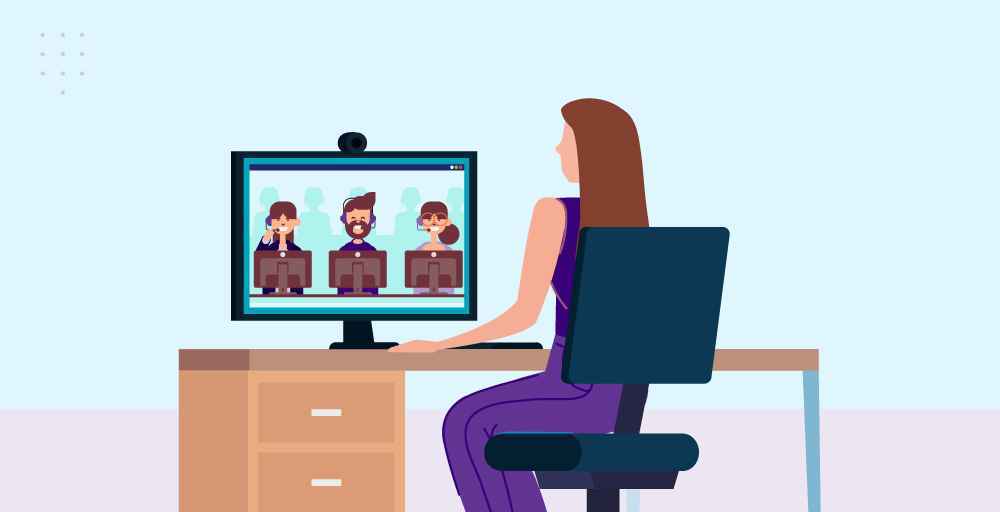
Call shadowing is a low-cost and very effective way for new hires to observe how different scenarios play out in the real world and how colleagues with years of institutional expertise deal with different challenges.
It is a method that gets around typical communication barriers. Silently monitoring and listening to live expert calls encourages teamwork and facilitates the sharing of knowledge and skill improvement.
What are the benefits of call shadowing?
Call shadowing may be your hidden weapon, whether you’re an experienced expert looking to hone your craft or a novice hoping to make a splash in sales calls, customer calls, or any other communication-heavy industry.
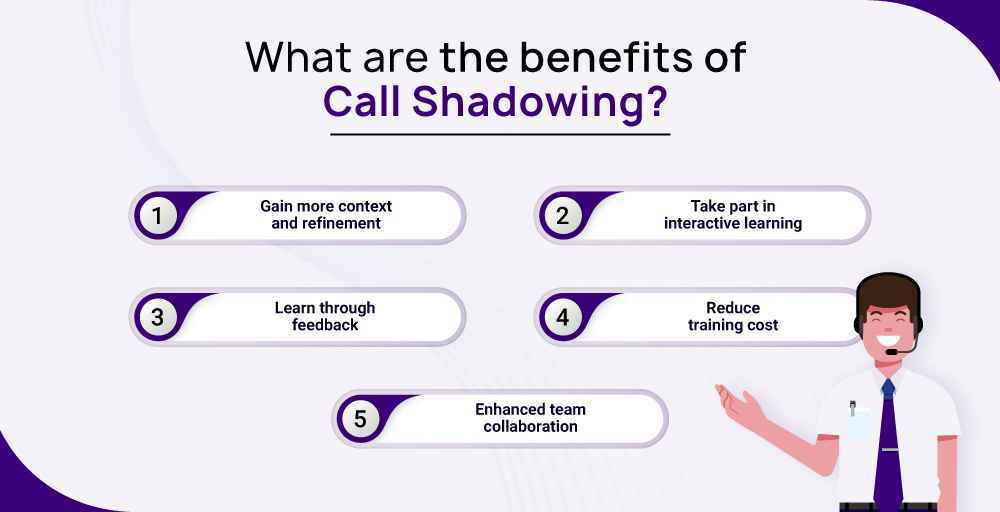
Making a variety of calls is beneficial. Here are some benefits of implementing call shadowing techniques:
1. Gain more context and refinement
While onboarding guidelines are helpful for new employees, they can’t fully simulate the experience of a live client contact.
By seeing mentors during the whole call process—from preparation to execution to client follow-up—trainees have a stronger grasp of their duties.
2. Take part in interactive learning.
While recorded client conversations are useful for preparation, call shadowing—the practice of actively watching mentors during real calls—offers more dynamic learning opportunities.
This method encourages critical thinking, participation in discussions, and asking questions while offering instructive feedback over the phone system.
3. Learn through feedback
Prompt feedback is beneficial to learners during call nesting because recommendations have the most effect when offered in the context of the scenario when details are still fresh in the learner’s mind.
The trainee’s calls lose their immediacy when feedback is given at the end of the week, which reduces the total effect.”
4. Reduce training cost
Call shadowing is cost-effective compared to traditional training methods to onboard new hires and upskill existing employees.
It can increase current workers’ output and provide them more productive time to develop with new personnel. It also helps to provide feedback so that it can be easily reduced by training costs.
5. Enhanced team collaboration
Through learning from one another’s experiences and providing feedback, shadowing may dismantle organizational silos and promote a more collaborative work environment.
New hires can get more knowledge from existing, experienced representatives. To share their knowledge, they may work together.
How does call shadowing work?
Call shadowing usually entails connecting a mentor or supervisor to a live call without the customer’s awareness. Communication methods or specific software can be used to do this.
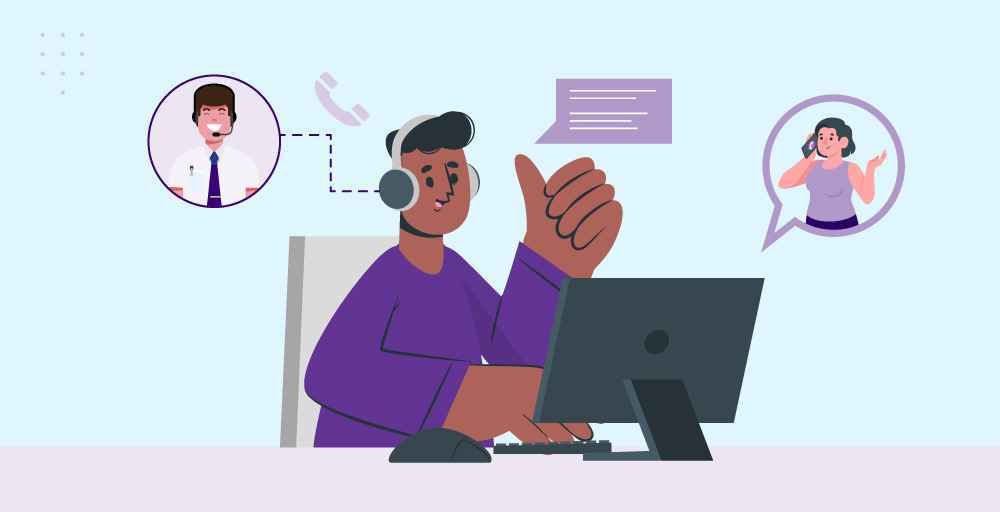
Staying in the background, the observer can listen, whisper, or even take over the call if needed. This method guarantees that agents receive instruction in real-time and enables on-the-fly tutoring.
How do I set up call shadowing?
Before setting up call shadowing, you should plan carefully when establishing a call shadowing program, including the kinds of calls a new representative participates in and the mentors with whom they are matched.
Here are some steps to set up call Shadowing:
1. Set your goals
Establish a clear definition of the aims and objectives of the call shadowing program. This might require raising the bar on customer service abilities, refining sales strategies, or making sure communications are consistent.
2. Assign the phone numbers that sales representatives (CSR) should answer.
During the call shadowing process, indicate which phone numbers sales reps or customer service representatives (CSRs) should answer. By doing this, it is ensured that trainees receive calls that are pertinent to their duties.
3. Select call shadowing mentor-trainee pairs.
Identify experienced employees (mentors) who will guide and mentor trainees during the call shadowing process. Assign each trainee to a mentor in accordance with their qualifications, experience, and the particular objectives of the shadowing program.
4. Make trainees experience call nesting
Taking part in live calls while being watched over or assisted by their mentors is known as “call nesting.” Learners may use what they’ve learned in the real world and get feedback right away thanks to this practical assignment.
Call Shadowing vs Call Recording: What is the difference?
Call shadowing and call recording are two different things; they are explained below
| Call shadowing | Call recording |
| Call shadowing is a process in which new hires listen to an experienced representative during the call. | Call recording is a process in which it takes screenshots and records audio. |
| Takes place in real-time, enabling the watcher to offer prompt advice and comments throughout the discussion. | It happens in an asynchronous fashion and may be seen at a later time. |
| Mostly used for mentorship and training, call shadowing enables people to pick up tips from more seasoned colleagues and get quick feedback. | Us in performance analysis, compliance monitoring, and quality assurance is common. Reviewing recordings is possible for assessment, training, or settling client complaints. |
| Conversation shadowing offers a dynamic and engaging learning experience since the observer can assist, direct, or interfere as needed during the live conversation. | Provides an after-the-fact analysis without allowing for real-time communication. After the facts, feedback is given. |
| Since there is a second listener engaging in the live call, both individuals involved must provide their approval. | Due to the fact that it records and stores conversations, it is usually subject to legal and regulatory restrictions involving permission and notice. |
Train your new teams with the KrispCall Call shadowing Feature
KrispCall call shadowing software helps you train your teams by enabling your new teams to listen in on live calls without being audible to the caller or agent.
Feedback should be given to your new team members following each call shadowing session. They will be able to grow as a result of this and learn from their errors.
When using role-playing and classroom instruction with other training techniques, make use of call shadowing. This will contribute to providing your new team members with comprehensive training.
The feature offered by KrispCall helps and improves the training process by providing certain features associated with call monitoring, feedback, or group learning.
Book a demo to learn about call shadowing
Conclusion
Call shadowing is a particularly useful training technique in the field of digital communication. It enables new hires to actively learn by listening in on seasoned agents during genuine client interactions. This economical method lowers training expenses by encouraging teamwork, quick feedback, and active learning.
The call shadowing process may be optimized for thorough skill development by carefully selecting mentors, establishing targets, and using tools like KrispCall.
So what are you waiting for? Try KrispCall and automate training your team members
FAQs
Who can create shadow events?
Only admins who have authorization can create shadow events.
What is the purpose of call shadowing?
The purpose of the call shadowing is to monitor the experienced representative for the professional development of new hires.
Can call shadowing be beneficial in virtual team environments?
Yes, call shadowing can be beneficial in virtual team environments.

